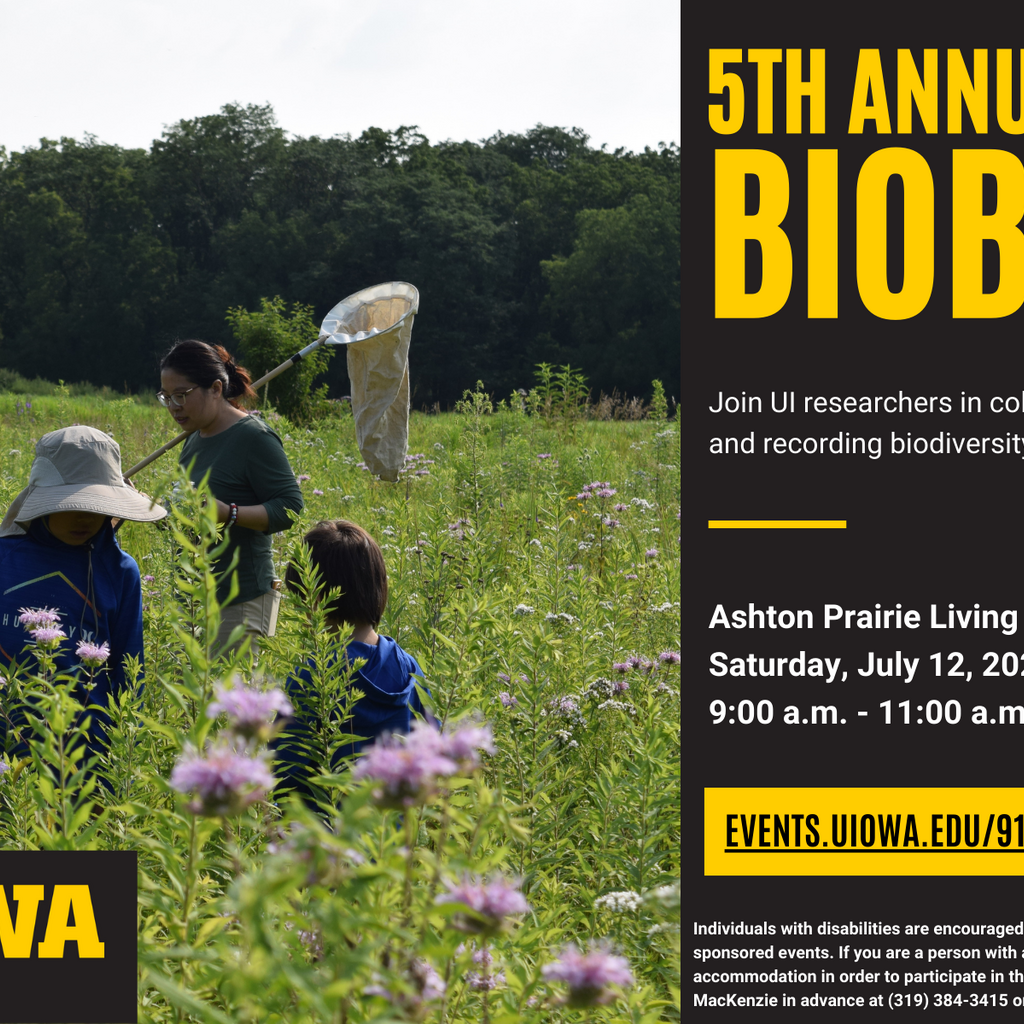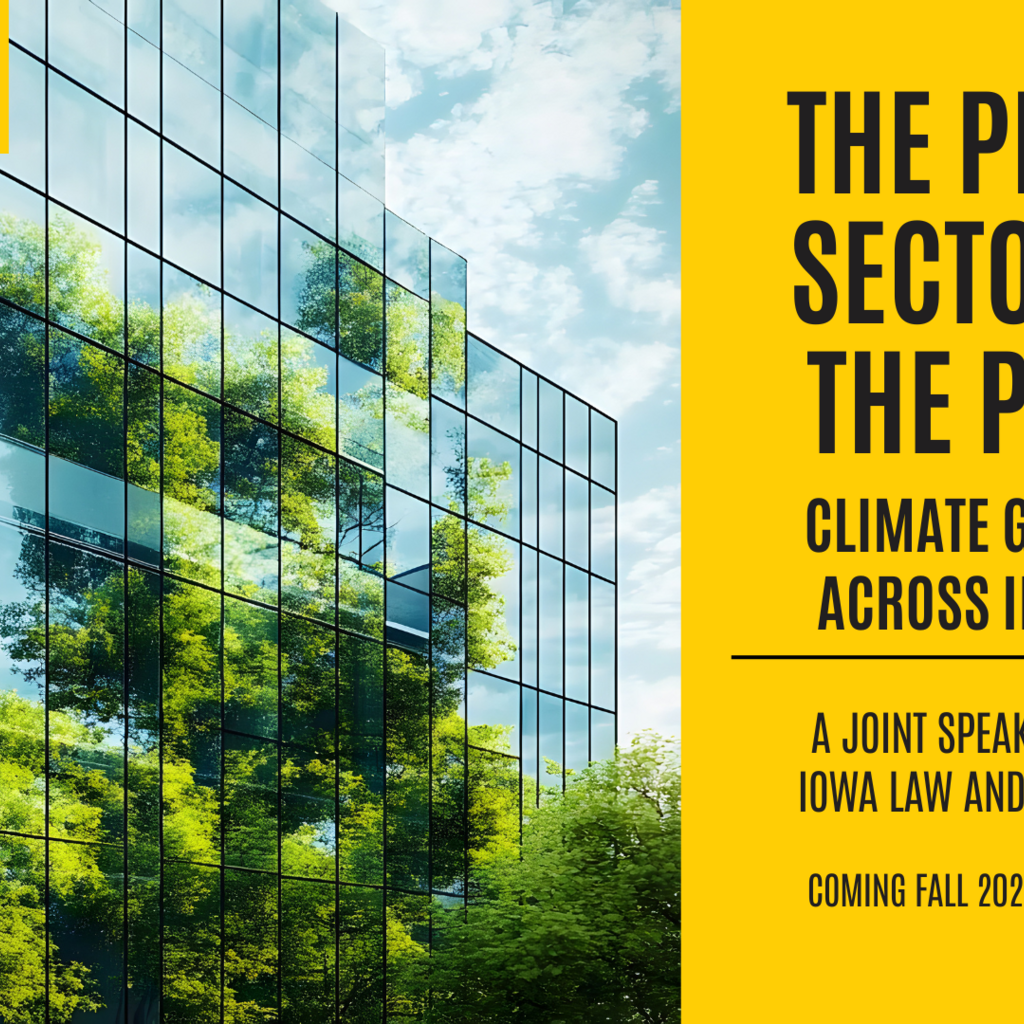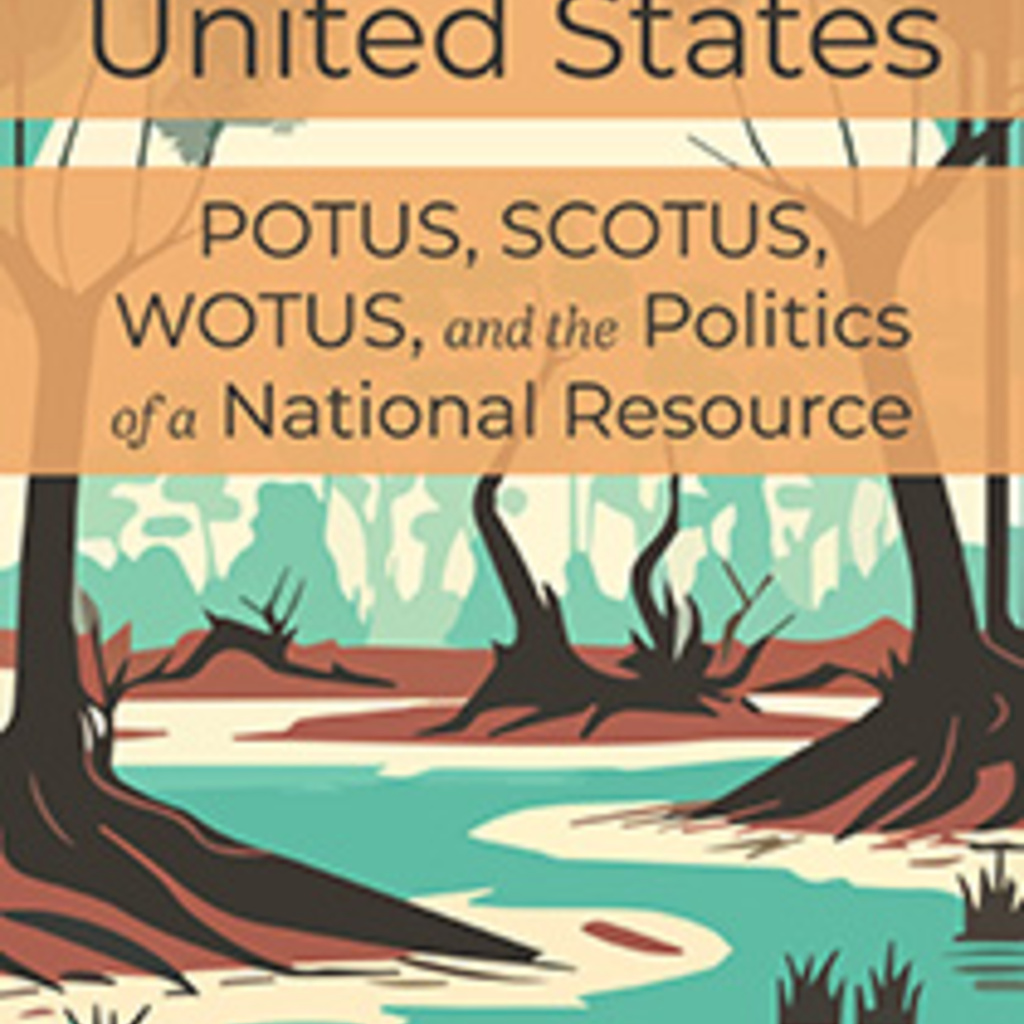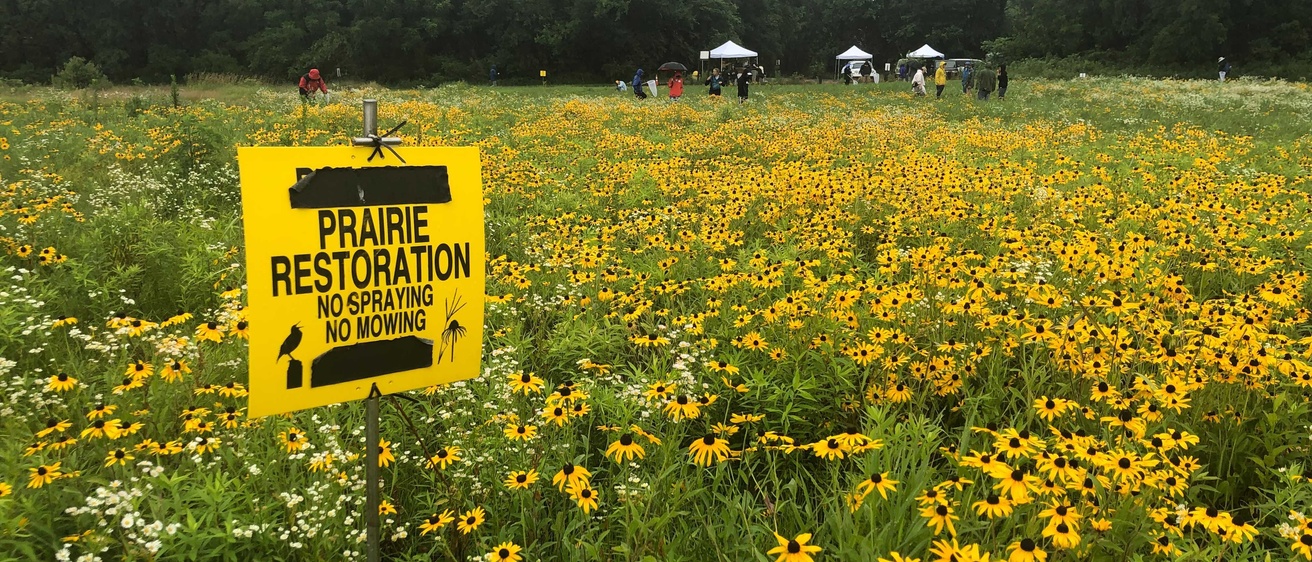About the Ashton Prairie Living Lab
Learn more about the Ashton Prairie Living Lab by clicking here.
Prairie Restoration (ENVS:3230)
Students enrolled in the Prairie Restoration course assist in the maintenance and research of the prairie reconstruction at the Ashton Prairie Living Lab. Learn more about that course here.
Funding and Support
The Ashton Prairie Living Lab is the recipient of multiple grants. Click the link below for more information on the grant awards and the generous organizations--including the UI Undergraduate Student Government (USG)--that have funded this project.
Frequently Asked Questions
What is prairie reconstruction?
Prairie reconstruction is both the scientific study and the physical act of reconstructing a portion of a once vast and now largely absent landscape, the North American prairie ecosystem. Typically, prairie is reconstructed on degraded land, i.e., severely altered by agricultural, industrial, commercial and/or residential development. Euro-American colonizers decimated the original prairie ecosystem and, today, less than 0.1% of the original Tallgrass Prairie remains. Rapid development and conversion of the original prairie ecosystem has led to increased soil erosion and topsoil loss, decreased biodiversity and increased carbon emissions. Ecological restoration efforts, like the Ashton Prairie Living Lab at the UI Ashton Cross Country Course, are present and growing at various regional colleges and universities.
The Ashton Prairie Living Lab is co-managed by the UI Office of Sustainability and Department of Athletics.
Why is the prairie ecosystem important?
The Tallgrass Prairie ecotone is endemic to Iowa. Rich in natural splendor, a sea of grasses and wildflowers once bloomed yellow, purple, pink and every color in between. Nestled among grasses, an endless emerald expanse teemed with birds, butterflies, bees, bison and more. Follow the compass plant north and immerse yourself amongst the sounds and sights of life. Biodiversity abounds, overwhelming you with a sense of awe. There is innate worth in a native ecosystem. The multitude of ecosystem services can be employed to counter the destructive impacts of climate change. Wildlife habitat is priceless, native birds, insects and others depend on the prairie.
In many ways, the future of humanity is linked to the health of the prairie. The connection to the prairie ecosystem is beyond the written record and human memory. Beginning with indigenous nations, such as the Báxoǰe (Ioway) and Meskwaki, who first called this land their home, the prairie holds a unique role in the culture and history of Iowa. Its legacy must be conserved and protected. As Samuel Calvin, Iowa’s first geologist, said: “long before there were any historians, events of historical importance were enacted within the limits of Iowa.”
What plants are in this prairie?
Over fifty plant species have been seeded at this prairie reconstruction, including many spectacular and interesting forbs and grasses. Look for the Compass Plant, with its yellow aster flower standing up to ten feet tall and waxy leaves that curiously align north-south. Find the Wild Bergamot with its characteristic square stem and purple flower which blooms in July, break open its leaves and smell its tea-like aroma. In the spring and early summer, watch for the spectacular Ohio Spiderwort with its three petaled, purple blossom. Finally, if you’re lucky, you may find the Prairie Wild Rose, whose large, pink flower is recognized as the state flower of Iowa. The tallest plants you’ll notice are the grasses, whose stems rise up ten feet into the air.
Click here for the complete Ashton Prairie Living Lab seed list.
What are some of the ecological services or benefits of a prairie reconstruction?
Prairie plants perform myriad ecological services: build soil, mitigate soil erosion, infiltrate stormwater, provide pollinator and wildlife habitat, clean water and air and sequester carbon. Many of the environmental problems we face today can be attributed to the loss of native ecosystems.
Many prairie plants are perennials, deep-rooted and dense. Some Euro-American settlers noted the characteristic "ping" their moldboard plows made when cutting ancient prairie root systems. Sometimes, colonizers were simply unable to plow through the thick prairie sod.
Prairie root systems rebuild soil, mitigate erosion, infiltrate stormwater runoff, catch excess nutrients and purify water before it reenters creeks, streams and rivers. Water purification, stormwater mitigation and soil erosion control are especially important in Iowa. Prairie offers us a safe and natural way to decrease pollution and eutrophication in polluted and degraded waterways.
Additionally, the prairie is one of the most diverse ecosystems on the planet, with over 500 documented plant species. Biodiversity supports a stable, sustainable planet and is important to the survival of humanity. Pollinators, such as bees and butterflies, rely on healthy ecosystems for habitat, and humans rely on the work of pollinators for food and medicine. In this way, humanity is inextricably linked to the health and biodiversity of our ecosystems, and our ecosystems are clearly linked to the condition of our planet. At home in Iowa, this manifests as a relationship between citizens and the tallgrass prairie, and for this reason prairie conservation and reconstruction is an essential part of the local solution to climate change.
What animals live in a prairie?
Numerous animals and insects live on the prairie, most famously the bison, which evolved with pointed hooves to aerate the ground and an appetite for just the tips of stems, to promote prairie plant growth and development. In Iowa, the fabulous ornate box turtle also calls the prairie home. Native birds such as the greater prairie chicken and sharp-tailed grouse share the prairie with foxes, ground squirrels, voles, mice, gophers, frogs, snakes, and others. Insects including native bees, monarch butterflies, beetles, praying mantises, dragonflies, and grasshoppers buzz, bounce, and fly amongst the grasses. Seldom seen but of major importance are the thousands of soil organisms that live amongst the prairie roots, recycling nutrients and maintaining healthy, fertile soil.
How long does it take to reconstruct a prairie?
Just as the prairie ecosystem evolved over many years, a prairie reconstruction takes several years to reach maturity. In the first growing season, the seedbed is prepared using controlled burns, mowing, chemical application, and/or plastic coverings to bake the ground. Prairie seeds are best planted on bare ground, and the techniques used to prepare the seedbed strive to wipe the slate clean. After native plant seeds are sown, critical first year maintenance tasks commence. Maintenance techniques such as height-adjusted mowing, prescribed burning, over-seeding, and invasive species removal are performed periodically to ensure native plant seedling establishment and eradication of nonnative and other undesirable species. Similar maintenance is performed throughout the second and third growing seasons.
The extensive prairie root system helps native plants to outcompete weeds and invasives, and it is not until the third growing season that perennial prairie plants begin to establish dominance. Once the native plants have taken over the landscape, the prairie becomes largely self-sustaining and little further maintenance is required. Beyond year three, annual to biannual prescribed burns are used to prevent ecological succession and encroachment of undesirable plants.
Who is involved in this prairie reconstruction?
This project would not have been possible without the generous contributions from the University of Iowa Undergraduate Student Government (USG) and the Iowa Native Plant Society (INPS). Additional partners include: The University of Iowa Department of Athletics, the Office of Sustainability and the Environment, the Department of Earth and Environmental Science, the Department of Biology, the Department of Civil & Environmental Engineering and IIHR – Hydroscience & Engineering.
How do I get involved and/or learn more?
Contact sustainability@uiowa.edu to learn more.
University of Iowa Land Acknowledgement Statement
Upcoming Events

5th Annual BioBlitz at the Ashton Prairie Living Laboratory

The Private Sector and the Planet: Environmental Governance Across Industries

